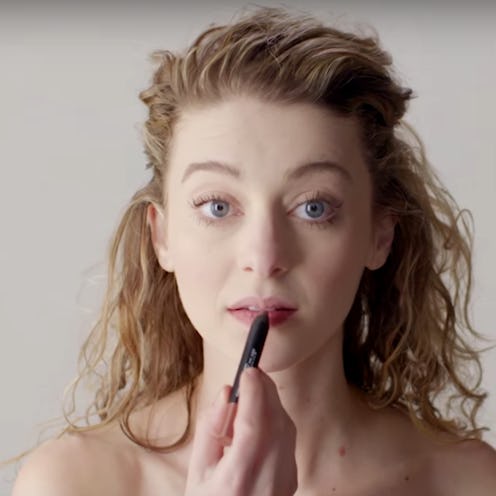Life
These Morning Routines Prove The Pink Tax Is Real

A new video from Glamour called “The Cost of Being a Woman” starkly illustrates how gendered pricing affects women’s lives every day. Depicting a split screen of a woman and a man going through their morning routines, the video shows that women pay more than men in both time and money when making themselves presentable (or at least what is traditionally defined as “presentable”). The pink tax is real, my friends — get ready to feel ragey about it.
The video highlights two separate issues involved in the high cost of being a woman: The “pink tax,” and cultural expectations of women that pressure them to buy products that men usually don’t use. The first of these — known as the “pink tax” or the “women’s tax” — is well documented, but that doesn’t make it any less maddening. The pink tax is a the common practice among service providers and companies of charging more for products marketed to women than for those marketed to men — even when the products are very similar or even identical. As the Glamour video shows, women often pay more for products like razors, deodorants, and moisturizers than men do. Often there is very little difference between the “male” and “female” versions of these items, beyond packaging and fragrance. A 2010 study from the University of Central Florida, for example, found that deodorants formulated for women cost an average of 30 cents more than those created for men, even though the “only discernible difference was scent.” Women also pay more for services like dry cleaning and haircuts.
The video portrays a man and woman going through their morning routines side by side, and, for much of it, the amounts they pay for their various products isn’t that much different. Yes, the woman consistently pays more because of the pink tax, but the yearly difference between her and her male counterpart is a few hundred dollars. That’s nothing to sneeze at, of course, but that amount seems fairly modest when considered alongside estimates that, across the board, gender bias in pricing costs women $1351 a year. (That number comes from analysts in California, which became the first state to ban gendered pricing in 1996). In the video, the difference between the man and the woman’s respective costs skyrockets when the woman starts applying makeup.
As any makeup lover knows, makeup can be really expensive, so it’s no surprise that the woman’s costs go up sharply when she starts applying primer, foundation, concealer, and so on. The guy on the other side of the split screen has no such costs. In this case, the issue is not so much that the woman is paying more for the same products as the man, but that she’s buying products he’s not purchasing at all. The comparison gets a little trickier here, because both genders have expenses that the other doesn’t have (The man uses a beard trimmer, for example), and so not every product marketed for one gender has an equivalent for the other. However, I think it’s fair to say that, in general, women are expected to buy more personal care products — including makeup — than men are.
One could argue that women who don’t want to pay these extra costs simply shouldn’t buy makeup, and, certainly, plenty of women do choose not to wear makeup, for a variety of reasons. But, for a lot of women, it’s not that simple; they face deep-seated cultural expectations that a woman who is “put together” or “professional” is one who wears makeup. Women are also conditioned from a young age — by the people around them, by the media, by marketing — to feel like makeup and other personal care products are required components of being female. Of course, not every woman is the same, and, of course, lots of women enjoy wearing makeup. My point is simply the “cost of being a woman” that this video depicts isn’t only a matter of being charged more than men for the same products — it’s also a more complicated issue that’s tangled up with longstanding stereotypes about femininity and beauty.
Images: YouTube (3)